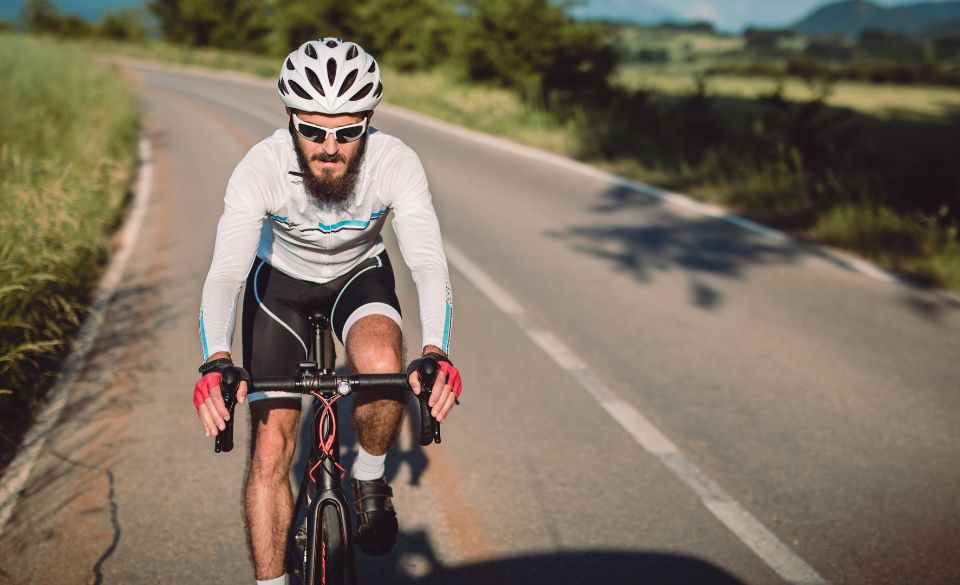
A Beginner’s Cycling Training Plan for 200km: Conquer the Distance with Confidence
Page Contents
Are you ready to take on the challenge of a 200km ride? Whether you’re a beginner cyclist looking to conquer your first long-distance event or an experienced rider seeking to improve your performance, this beginner’s cycling training plan for 200km has got you covered. Cycling 200km requires proper preparation and training, but with the right approach, you can ride with confidence and joy. So, let’s gear up, hop on our bikes, and embark on a journey to conquer this impressive distance!
Importance of Training for a 200km Ride
Training for a 200km ride is no small feat, and to conquer this challenging distance, you need to focus on several key aspects during your training. The first and most crucial element is building endurance. Endurance training forms the foundation of your preparation, allowing your body to adapt to the demands of sustained cycling for hours on end. Start with shorter rides and gradually increase your mileage and ride duration over time. As your body becomes accustomed to the longer distances, you’ll find yourself better equipped to handle the 200km ride with ease.
In addition to endurance, climbing skills should also be a focal point of your training. Depending on the route, you may encounter hills and challenging terrains during the 200km ride. Practice climbing regularly to build strength and confidence on ascents. Incorporate hill repeats into your training plan, tackling challenging gradients to improve your climbing abilities.
Equally important is understanding nutrition and hydration during your training. Long-distance rides demand proper fueling and hydration to sustain your energy levels. Experiment with different nutrition strategies during training to identify what works best for you. Practice consuming carbohydrates and staying hydrated during your longer rides, so you’re well-prepared for the nutritional demands of the 200km ride.
Furthermore, bike fit and comfort are essential considerations. Ensure your bike is properly fitted to your body measurements to prevent discomfort and reduce the risk of injuries during training and the event itself. An ill-fitted bike can lead to unnecessary strain on your muscles and joints, hindering your overall performance and enjoyment.
Lastly, mental preparation is key. Long rides can be mentally challenging, and your mental strength will play a crucial role in completing the 200km ride successfully. Practice positive visualization and mental toughness during training to stay motivated and focused during the event. Developing mental resilience will help you push through difficult moments and maintain a positive mindset throughout the ride.
What You Should Focus on When Training for 200km
Training for a 200km ride requires a well-rounded and balanced approach that targets various aspects of your cycling fitness. The primary focus should be on building endurance, as completing a 200km ride demands the ability to sustain effort for an extended period. Gradually increasing your weekly mileage and incorporating longer rides will help your body adapt to the rigors of cycling long distances.
In addition to endurance, climbing skills are essential when preparing for a 200km ride. Many routes may include challenging hills or mountainous terrains that require strength and technique to conquer. Including hill repeats and practicing climbing regularly during training will improve your ability to tackle inclines with confidence and efficiency.
Another critical aspect to consider is nutrition and hydration. Proper fueling and hydration are vital for maintaining energy levels and preventing fatigue during the long ride. Use your training rides as an opportunity to practice your nutrition strategy and find the right balance of carbohydrates, proteins, and fluids that work best for you.
Furthermore, incorporating interval training into your regimen can be beneficial. Interval sessions involve alternating between high-intensity efforts and periods of recovery. These workouts improve your cycling economy, enabling you to maintain a steady pace during the 200km ride.
Additionally, mental preparation should not be overlooked. Long rides can be mentally challenging, and having a strong mindset is crucial for staying motivated and focused during the event. Practice positive visualization and mental resilience during training to build mental strength and confidence.
Lastly, don’t forget to include rest and recovery in your training plan. Adequate rest allows your body to recover and repair, preventing overuse injuries and promoting better performance on the big day.
Workouts in a 200km Training Plan
A comprehensive training plan for a 200km ride should include a variety of workouts that target different aspects of your cycling fitness. These workouts will help you build the necessary endurance, strength, and stamina required to conquer the challenging distance. Here are some key workouts to include in your 200km training plan:
1. Long Endurance Rides: Long endurance rides form the backbone of your training plan. These rides are crucial for building your stamina and preparing your body for the demands of cycling 200km. Start with moderately long rides and gradually increase the distance each week. Aim to complete at least one long ride each week, with the goal of reaching a distance close to the event’s length as you approach the big day.
2. Hill Repeats: Hill repeats are essential for improving your climbing skills and building strength on ascents. Find a challenging hill with a steady gradient and ride up it at a higher intensity multiple times. Recover by riding at an easy pace back down the hill. Hill repeats will not only boost your climbing ability but also increase your overall cycling power.
3. Tempo Intervals: Tempo intervals involve riding at a sustained effort level, just below your maximum capacity. These intervals improve your aerobic capacity and teach your body to sustain a steady rhythm during extended rides. Include tempo intervals in your training plan to enhance your endurance and cycling economy.
4. Recovery Rides: Recovery rides are shorter, easier rides that focus on active recovery. These rides allow your muscles to recover and adapt to the training load, reducing the risk of overuse injuries. Incorporate recovery rides in between harder workouts to promote optimal recovery.
5. Back-to-Back Rides: As the event date approaches, consider incorporating back-to-back rides into your training plan. These rides involve cycling on consecutive days to simulate the fatigue you may experience during the 200km ride. Back-to-back rides help prepare your body for the challenge of riding long distances on consecutive days.
6. Simulated Rides: To build confidence and mental preparedness, plan a few simulated rides that mimic the conditions of the 200km event. Ride on a similar terrain and distance, and practice your nutrition and hydration strategies during these simulated rides.
Remember that every cyclist is different, and your training plan should be tailored to your fitness level and individual goals. Be consistent with your workouts, listen to your body, and gradually progress to longer distances and higher intensities. With a well-structured training plan that includes a variety of workouts, you’ll be well-prepared to take on the 200km ride with confidence and enthusiasm
20-Week Training Plan for 200km
30-Week Training Plan for 200km
A 30-week training plan allows for a more gradual and steady approach to preparing for a 200km ride, giving your body ample time to adapt and build the necessary endurance and strength. Here’s a detailed 30-week training plan to help you conquer the challenging distance with confidence:
Week 1-4: Building Base Fitness
– Monday: Rest day or light cross-training activity (e.g., walking or gentle yoga).
– Tuesday: 1-hour easy ride at a comfortable pace.
– Wednesday: 1.5-hour ride with some short hill efforts.
– Thursday: Rest day or light cross-training.
– Friday: 1-hour easy ride.
– Saturday: 2-hour ride with some longer, steady efforts.
– Sunday: 1.5-hour easy recovery ride.
Week 5-8: Increasing Endurance
– Monday: Rest day or light cross-training.
– Tuesday: 1.5-hour ride with hill repeats.
– Wednesday: 2-hour ride with steady efforts.
– Thursday: Rest day or light cross-training.
– Friday: 1.5-hour easy ride.
– Saturday: 3-hour ride with some longer intervals at a moderate pace.
– Sunday: 2-hour easy recovery ride.
Week 9-12: Introducing Longer Rides
– Monday: Rest day or light cross-training.
– Tuesday: 2-hour ride with hill repeats.
– Wednesday: 3-hour ride with steady efforts.
– Thursday: Rest day or light cross-training.
– Friday: 1.5-hour easy ride.
– Saturday: 4-hour ride with some longer intervals at a moderate pace.
– Sunday: 2.5-hour easy recovery ride.
Week 13-16: Focusing on Climbing and Intensity
– Monday: Rest day or light cross-training.
– Tuesday: 2.5-hour ride with hill repeats.
– Wednesday: 3.5-hour ride with steady efforts, including some climbs.
– Thursday: Rest day or light cross-training.
– Friday: 1.5-hour easy ride.
– Saturday: 4.5-hour ride with longer intervals at a challenging pace.
– Sunday: 3-hour easy recovery ride.
Week 17-20: Building Endurance and Climbing Skills
– Monday: Rest day or light cross-training.
– Tuesday: 3-hour ride with hill repeats.
– Wednesday: 4-hour ride with steady efforts, including challenging climbs.
– Thursday: Rest day or light cross-training.
– Friday: 1.5-hour easy ride.
– Saturday: 5-hour ride with longer intervals at a challenging pace.
– Sunday: 3.5-hour easy recovery ride.
Week 21-24: Increasing Distance and Intensity
– Monday: Rest day or light cross-training.
– Tuesday: 3.5-hour ride with hill repeats.
– Wednesday: 4.5-hour ride with steady efforts, including longer climbs.
– Thursday: Rest day or light cross-training.
– Friday: 1.5-hour easy ride.
– Saturday: 6-hour ride with longer intervals at a challenging pace.
– Sunday: 4-hour easy recovery ride.
Week 25-28: Simulating the 200km Ride
– Monday: Rest day or light cross-training.
– Tuesday: 4-hour ride with hill repeats.
– Wednesday: 5-hour ride with steady efforts, simulating the 200km ride conditions.
– Thursday: Rest day or light cross-training.
– Friday: 1.5-hour easy ride.
– Saturday: 7-hour ride with longer intervals at a challenging pace.
– Sunday: 4.5-hour easy recovery ride.
Week 29-30: Taper and Prepare for the Event
– Monday: Rest day or light cross-training.
– Tuesday: 1-hour easy ride with a few short efforts.
– Wednesday: 1-hour easy ride.
– Thursday: Rest day or light cross-training.
– Friday: Rest day or very light, short ride.
– Saturday (Event Day!): 200km ride! Start at a comfortable pace and focus on steady efforts throughout the route. Remember to stay hydrated and fuel properly during the ride.
– Sunday: Rest day or very light recovery activity.
Final Thoughts
This 30-week training plan provides a gradual and systematic approach to preparing for a 200km ride, allowing you to build both physical and mental strength. Be sure to listen to your body, take rest days when needed, and adjust the plan based on your individual progress and fitness level. With consistent training and dedication, you’ll be well-prepared to conquer the 200km distance and achieve an incredible cycling milestone.



